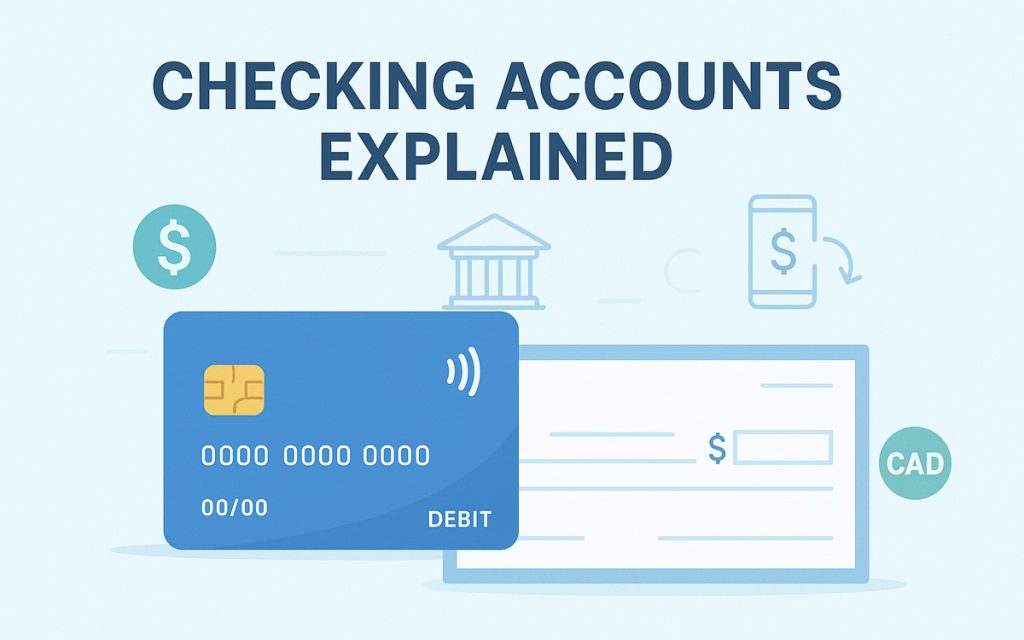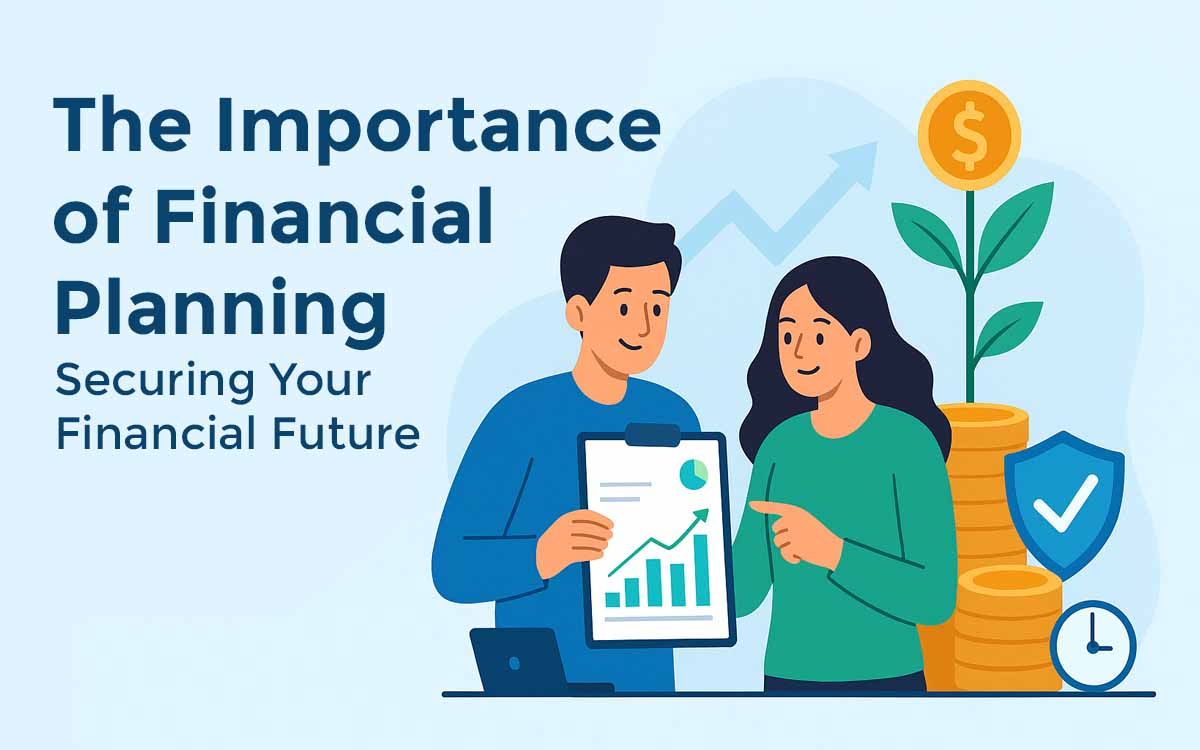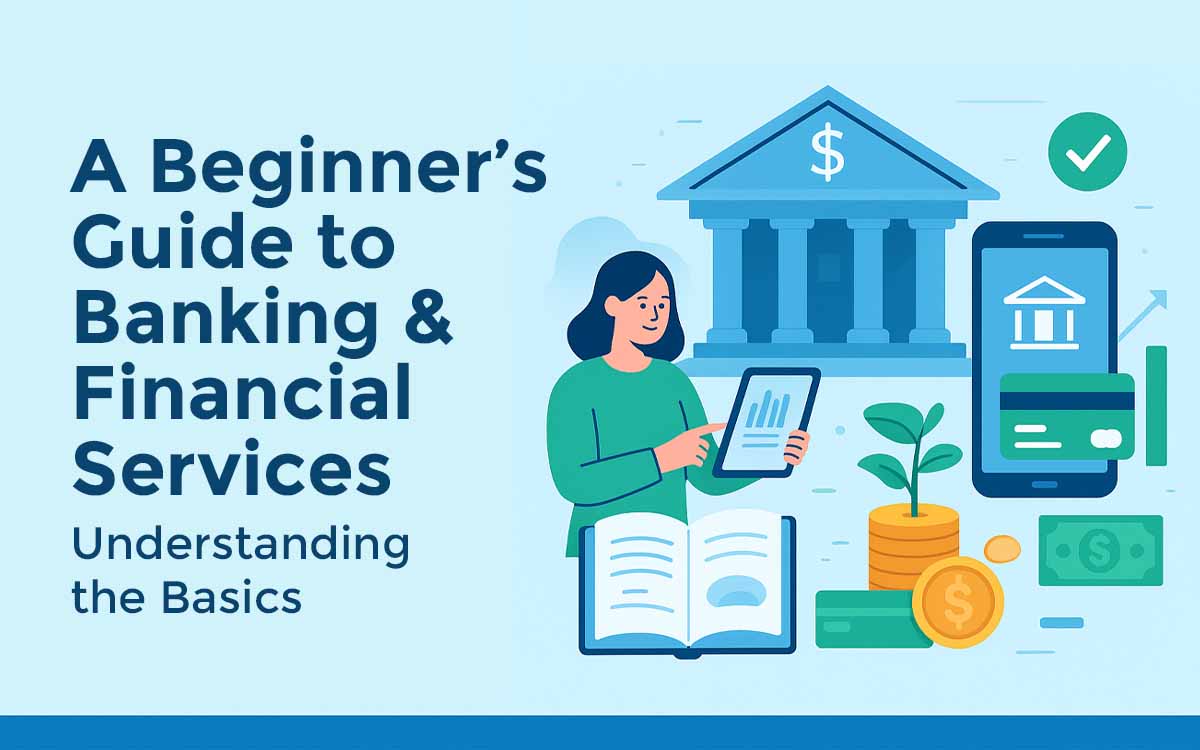Checking accounts (also known as current accounts in the UK and Commonwealth countries) are the backbone of everyday personal finance. Whether you’re paying bills, receiving your paycheck, setting up direct deposit, or managing everyday transactions, your checking account is often the central hub and the first financial product you open as most people do for your money. Yet, many people don’t fully understand how checking accounts work, what benefits they offer, and how to choose the best one.
Also, with so many types of checking accounts, traditional, online, student, and business, choosing the right one can be overwhelming.
This guide breaks down how checking accounts work, their benefits, common fees, and the best options in 2025 across the US, UK, and Canada.
Whether you’re opening your first account or switching to a better one, this guide will help you make the best decision.

What is a Checking Account?
A checking account is a deposit account offered by banks, credit unions, and online financial institutions that allows you to deposit money, make withdrawals, and handle everyday financial transactions.
Key uses include:
- Paying bills automatically
- Receiving salary via direct deposit
- Making purchases with a debit card
- ATM withdrawals and deposits
- Money transfers (ACH, wire, peer-to-peer apps)
Unlike savings accounts, which are designed to grow money, checking accounts prioritize accessibility and liquidity.
How Does a Checking Account Work?
A checking account acts as your financial command center. Here’s how it functions:
- Deposits – You add money through direct deposit, ATM deposits, or bank transfers.
- Withdrawals – You spend money using your debit card, checks, or ATM withdrawals.
- Transfers – You can move money between accounts (e.g., to savings or to pay loans).
- Payments – You can set up automatic bill payments or online banking transactions.
- Protection – Funds are typically insured (FDIC in the US, CDIC in Canada, FSCS in the UK).
Think of your checking account as the “highway” where your money moves in and out daily.
Here’s a tabular breakdown of the main functions with examples:
| Feature | How It Works | Example |
|---|---|---|
| Deposits | Add money through direct deposit, ATM, or mobile check deposit | Employer sends paycheck directly |
| Withdrawals | Spend with a debit card, checks, or ATM | Buy groceries using your debit card |
| Transfers | Move money to other accounts | Send $200 from checking to savings |
| Payments | Set up recurring or one-time bill payments | Auto-pay your Netflix subscription |
| Protection | Deposit insurance keeps money safe | FDIC in US, FSCS in UK, CDIC in Canada |
Types of Checking Accounts
Not all checking accounts are the same. Here are the most common types:
- Standard Checking Account – Basic features for everyday use.
- Interest-Bearing Checking Account – Earns interest on balances.
- Student Checking Account – Designed for students, often fee-free.
- Business Checking Account – Helps businesses separate finances.
- Online Checking Account – Offered by digital banks, usually fee-free.
- Premium Checking Account – Perks like free checks and higher limits (but high balance requirements).
- Joint Checking Account – Shared between two people (e.g., couples).
- Second-Chance Checking Account – For those with poor credit or banking history.
Explore: Types of Checking Accounts Explained
Checking vs. Savings Accounts: What’s the Difference?
| Feature | Checking Account | Savings Account |
|---|---|---|
| Purpose | Everyday spending & bills | Storing and growing savings |
| Access | Unlimited transactions | Limited monthly withdrawals |
| Interest | Low or none | Higher interest rates |
| Fees | Possible monthly/overdraft fees | Possible withdrawal penalties |
| Tools | Debit card, checks, bill pay | Transfers to/from checking |
Read: Checking vs Savings Accounts: Which is Right for You?
Benefits of a Checking Account
Having a checking account provides numerous financial advantages:
- Convenience – Central hub for managing money.
- Security – FDIC (US), FSCS (UK), and CDIC (Canada) insurance protect deposits.
- Direct Deposit – Faster access to paychecks.
- Debit Card – Spend anywhere without carrying cash.
- Bill Payments – Automate utilities, rent, subscriptions.
- Budget Tracking – Transaction history helps with money management.
- Flexibility – Link to savings, credit cards, or investment accounts.
Common Fees to Watch Out For
Many checking accounts come with hidden costs. Here are the most common:
- Monthly Maintenance Fee – $5–$15 unless waived by conditions.
- Overdraft Fee – $30+ when spending more than you have.
- ATM Fees – $2–$5 for out-of-network usage.
- Foreign Transaction Fee – 1%–3% on international purchases.
- Paper Check Fee – Some banks charge for physical checks.
How to Avoid Them:
- Choose a fee-free online account.
- Maintain the required minimum balance.
- Use only in-network ATMs.
- Opt into overdraft protection.
How to Choose the Best Checking Account
When comparing accounts, look at:
- Fees & minimum balance requirements
- ATM access (domestic & international)
- Mobile banking features (Zelle, Interac e-Transfer, UK Faster Payments)
- Customer service availability
- Perks like cashback, rewards, or interest
Best Checking Accounts in 2025
United States
| Bank | Best For | Key Features |
|---|---|---|
| Chase Total Checking® | Wide ATM network | $200 sign-up bonus, large branch access |
| Discover Cashback Debit | Cashback rewards | 1% cashback on purchases, no monthly fee |
| Ally Interest Checking | Online banking | No monthly fees, interest-earning |
| Capital One 360 Checking | Tech-savvy users | Fee-free overdraft, Zelle integration |
United Kingdom
| Bank | Best For | Key Features |
|---|---|---|
| Monzo Current Account | Mobile-first | Budgeting tools, instant notifications |
| Starling Bank | Frequent travelers | No foreign transaction fees, fee-free overdraft |
| HSBC Advance | Global users | Worldwide presence, perks for premium users |
| Lloyds Classic Account | Traditional banking | Strong in-person customer support |
Canada
| Bank | Best For | Key Features |
|---|---|---|
| Simplii Financial No Fee Chequing | Fee-free banking | No monthly fee, unlimited transactions |
| Scotiabank Preferred Package | Rewards seekers | Free if balance maintained, Scene+ rewards |
| TD Unlimited Chequing | Heavy spenders | Unlimited transactions, perks for high balances |
| RBC Advantage Banking | Everyday use | Free if balance is maintained, Scene+ rewards |
Read more about the best checking accounts in 2025
How to Open a Checking Account (Step-by-Step)
- Research your options (compare fees, features, and perks).
- Gather documents – Government-issued ID, proof of address, SSN (US) or SIN (Canada).
- Apply online or in-branch – Most banks allow online applications.
- Fund your account – Make your initial deposit.
- Set up online banking & direct deposit.
Learn more about how to open a Checking Account step by step
Pro Tips for Managing Your Checking Account
- Keep a buffer balance ($100–$200).
- Set up alerts for low balances.
- Automate bills to avoid late fees.
- Link savings for overdraft protection.
- Review statements monthly for fraud or errors.
Frequently Asked Questions (FAQ)
Can I have multiple checking accounts?
Yes. Many people use separate accounts for bills, business, or budgeting.
Is my money safe in a checking account?
Yes. Deposits are insured by FDIC (US up to $250,000), FSCS (UK up to £85,000), and CDIC (Canada up to C$100,000).
Can I open a checking account with bad credit?
Yes. Look for “second-chance checking” accounts.
Conclusion
A checking account is the foundation of your financial life, from managing daily expenses to securing direct deposits. The best account for you depends on your lifestyle, spending habits, and whether you prioritize low fees, convenience, or perks like cashback.
By understanding how checking accounts work and comparing the best options, you can choose the right account to manage your money smarter in 2025.
Next, explore our guides on:



